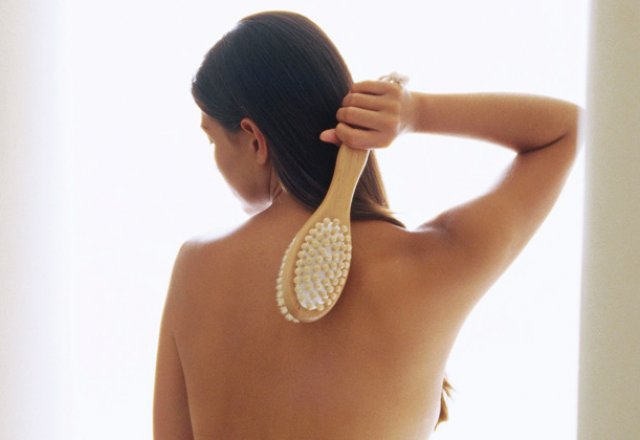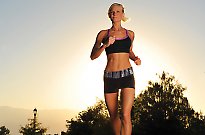
Body brushing - the essential guide

Benefits, tips and precautions
If you are looking for a way you can incorporate ‘detoxing’ in your everyday lifestyle, then why not try body brushing? It is a traditional technique to help remove dead skin build-up and stimulates the lymphatic system, to help eliminate waste. Experts claim that it can even dissolve cellulite and prevent premature ageing while obtaining brighter, smoother, softer looking skin.
Lymphatic Drainage
Body brushing helps speed up the process of eliminating waste via lymph stimulation.The lymphatic system is important for eliminating waste and dead cells from our body, by transferring them to the bloodstream ready for elimination. The lymphatic system does not use a pump like the circulatory system, where the heart keeps the bloodstream flowing. It depends on the contractions of muscle, through body movement, breathing, exercise or manual stimulation, to push the fluid along the lymph vessels. This is where body brushing can help to encourage blood flow through the channels and clean out the metabolic waste that can build up in the tissues and lymph nodes.
Skin Benefits
Our skin is the largest waste elimination organ in the body. Body brushing exfoliates the skin and removes dead skin cells that may be clogging up pores and interfering with toxin elimination. This process also assists with the prevention of dry skin, as it stimulates sebum secretion from the sebaceous glands, leading to softer, lustrous skin.
How to use the dry brushing technique
You will need a soft, natural-fibre body brush. Jodie Smith, director of Bodecare, which has the largest range of dry body brushes in Australia, recommends a firm brush for the feet, legs, buttocks and arms and a softer bristle for the torso (front and back). “If you only have one brush, then I suggest using lighter pressure on the more sensitive areas,” says Smith.
Start with the extremities of the body (i.e., hands or feet).
“As a general rule, stroke the brush in one upward movement towards the major lymph nodes in the body, such as the groin, armpits and base of neck,” says Smith.
A couple of exceptions to this rule is that you can brush back and forth between the fingers and toes and use small circular strokes in a clockwise direction on the stomach, following the movement of the gut.
“Work from left to right, which is the natural direction when massaging the body,” suggests Smith. Aim for three to five minutes a day.
Precautions
- Avoid using on breasts and genitalia area.
- Avoid on sensitive skin, varicose veins, open wounds, inflamed skin or painful rashes.
- Avoid on sunburnt areas.
- Avoid in an active cancer state or over enlarged lymph nodes.
- Seek doctor’s advice before brushing if pregnant
- Stop brushing if an allergic reaction appears.
Handy Tips
- “Always use a plant bristle body brush. Plant bristle from coconut husks or from the agave plant, (commonly called tampico or sisal bristle) provides the best exfoliation and stimulation for your skin. They are the highest quality, long lasting and don’t scratch the skin,” says Smith.
- Only brush on dry skin with dry brush bristles.
- Only use a brush specifically designed for the sensitive skin of the face, such as the new Bodecare face brush made from jute bristle.
- Stroking away from the heart places strain on the lymph vessels, as they only have one-way valves. Therefore, ensure you always brush towards the heart, encouraging lymph flow to the main lymphatic ducts.
- Use softer strokes and less pressure where the skin is thinner and use more pressure where the skin is tougher, such as the thighs and buttocks.
- If you are feeling unwell with a cold/flu, increasing the time you brush or doing it twice in a day may help boost your immunity.
- The lymph flow can easily become stagnant during natural detox or cleansing and body brushing can help move the stagnant energy.
- “Follow dry body brushing with some form of hydrotherapy; this may be a bath, shower, steam room, body mud mask or massage,” says Smith.


